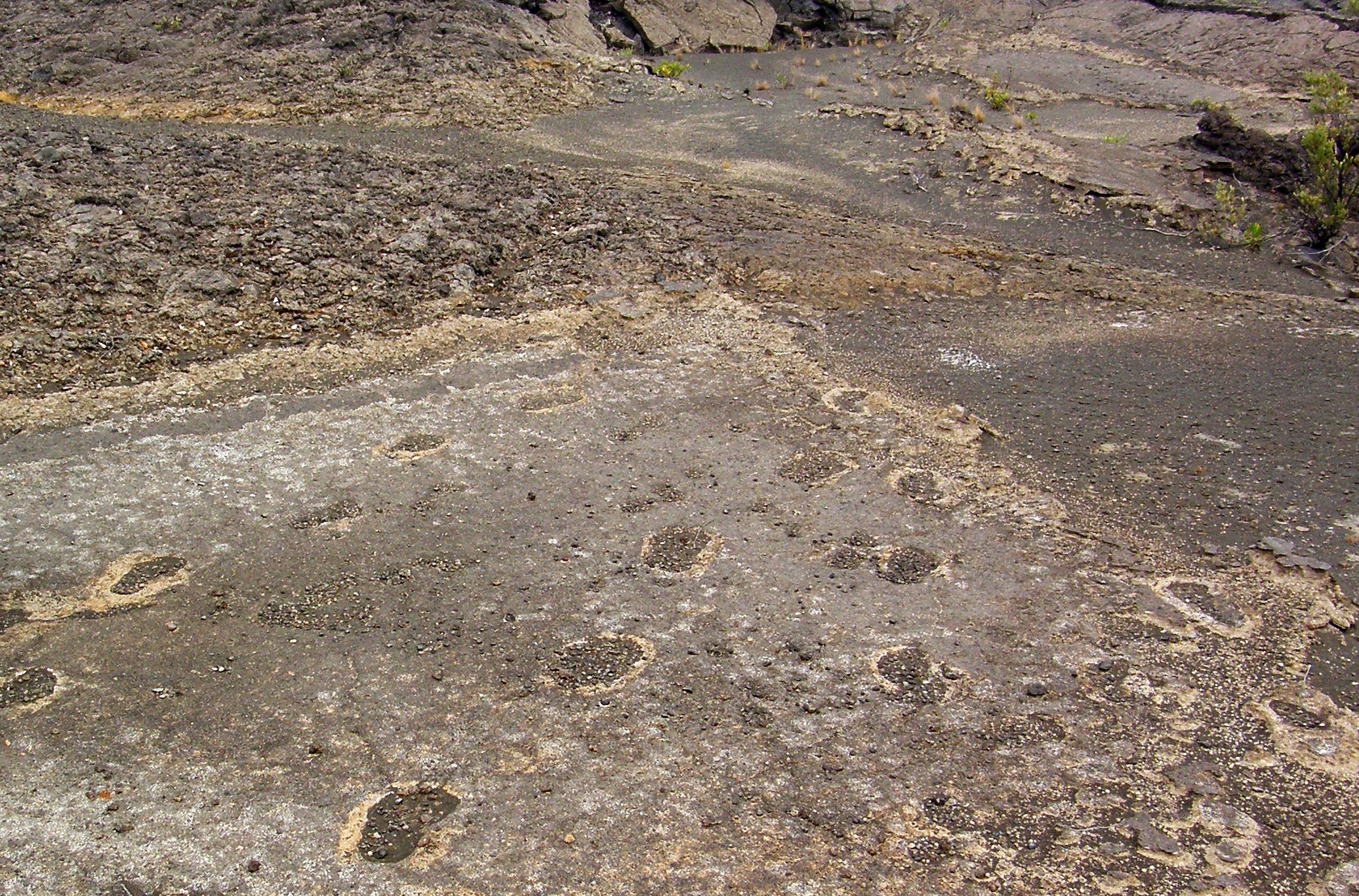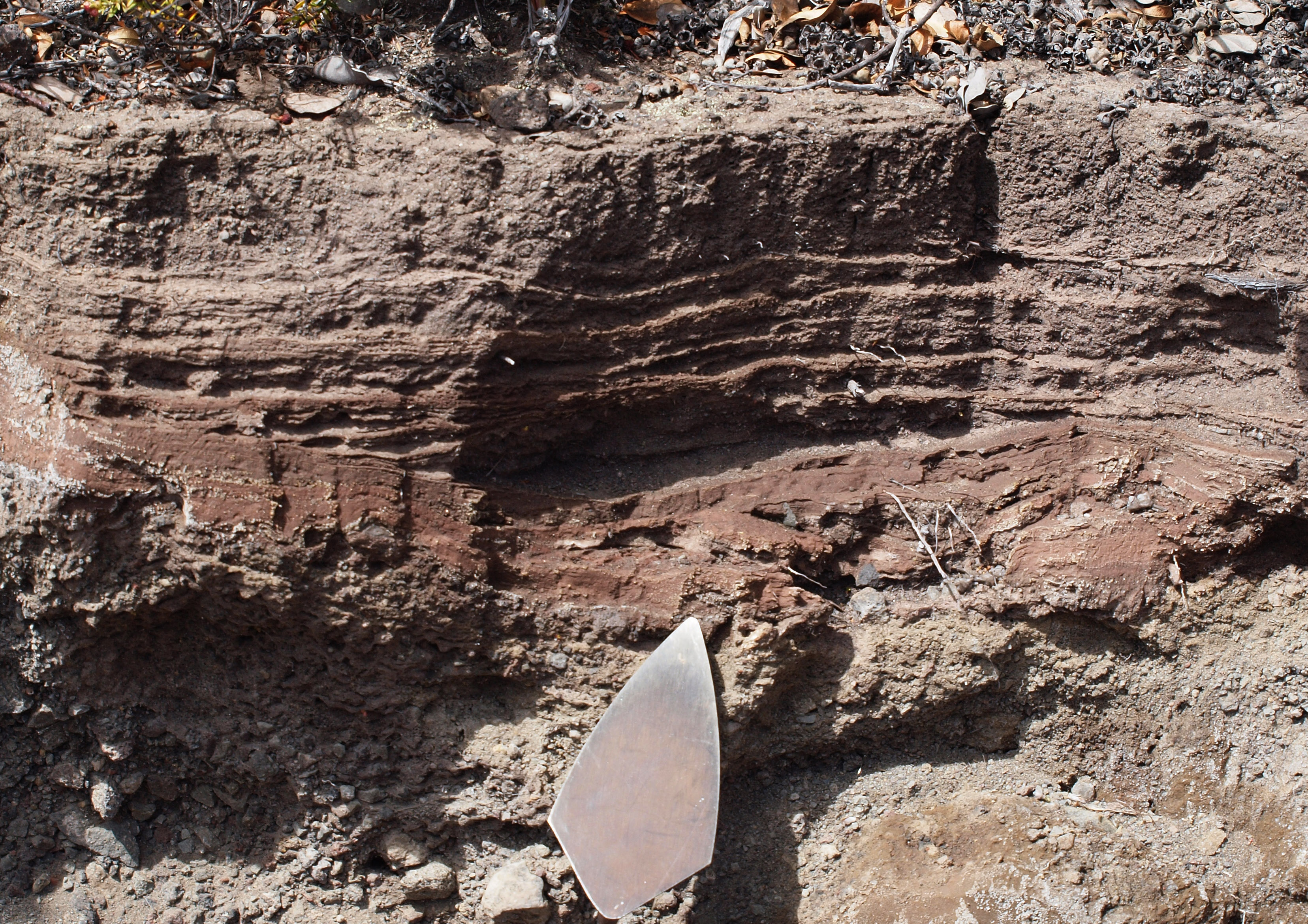Kilauea Volcano's Ashen Footprints May Point to Explosive Future

Thousands of human footprints cast in ash at Hawaii's Kilauea volcano are the final steps of people killed in a 1790 phreatic eruption — the same kind of unpredictable blast that caught hikers at Japan's Mount Ontake volcano in late September.
The footprints are evidence that the goddess Pele's reputation for power and ferocity were well-earned in the past, even though Kilauea is a tourist's volcano today. From about 1500 to 1800, Kilauea hurled mighty ash plumes into the jet stream and heaved huge rocks out of its deep caldera, the crater at the volcano's summit. And geologist Don Swanson thinks another round of violent eruptions will happen again.
"Too often, geologists and the general public view Kilauea as safe. It's just a stage that you come to and view a performance of great beauty," said Swanson, a geologist and former director of the U.S. Geological Survey's Hawaiian Volcano Observatory. "I hope that people realize Kilauea is not that way at all. Kilauea is an explosive volcano, and when it gets into an explosive period it can be life-threatening." [Explosive Images: Hawaii's Kilauea Erupts for 30 Years]
Guided by legends
Through decades of detective work, both geologic and historical, Swanson and his collaborators have reconstructed the grim story of the 1790 eruption, which killed at least 80 people. Their latest report was published Oct. 6 in the Geological Society of America Bulletin.
Kilauea erupted in November 1790, according to written records by a castaway and by missionaries who recorded eyewitness accounts from Native Hawaiians. The spectacular ash plume was visible from the island's north coast, and likely reached 30,000 feet (9,150 meters) into the air.
At the time, the doomed army of Keoua, a cousin and rival of Hawaii's Kamehameha the Great, was crossing the Ka'u Desert below Kilauea's summit caldera. A few hours after this first explosion, the volcano pelted the army with wet, muddy ash and pebbly clumps called lapilli. No one knows whose footprints were preserved in the ash. But based on their average length, Swanson thinks women and children were walking through the ash. More than half of the footprints head back in the direction of the eruption, he said.
Sign up for the Live Science daily newsletter now
Get the world’s most fascinating discoveries delivered straight to your inbox.
Three separate groups of warriors, women and children were caught on Kilauea that day. Just after the ash fall, one of three groups was killed by searing heat from a pyroclastic density current — a surge of ash and steam tumbling down the slope with the force of hurricane winds. Some of the dead were reportedly touching noses with loved ones in a final embrace.

Dangerous future?
Swanson and other geologists have uncovered rock and ash deposits on Kilauea that show the volcano has undergone two other periods of explosive activity. From about 2,200 to 1,000 years ago, the volcano was dominated by powerful outbursts, followed by 500 years of quiet lava flows. Then, between A.D. 1500 and A.D. 1800, there was another round of strong eruptions, and finally the switch to frequent and gentle lava flows that continue today. [The 10 Biggest Volcanic Eruptions in History]
The layers left behind by past eruptions suggest the blasts were powered by water, not by lava. When water encounters hot rock or lava underground, it flashes to steam and explodes. These so-called phreatic, or phreatomagmatic, eruptions are only possible when Kilauea's caldera sits deep enough to reach the volcano's underground water table. Eventually, the ejected rock fills in the caldera, and the explosive eruptions stop. Then, for as-yet-unknown reasons, the caldera collapses and the cycle begins again.
"The whole process is really controlled by how deep the caldera is," Swanson told Live Science. "During these larger explosive events, there is very little if any fresh magma involved."
Phreatic eruptions are deadly and unpredictable, as shown by the tragic deaths at Mount Ontake volcano.
Swanson said there's no indication that the Kilauea volcano is preparing for another series of violent outbursts.
Kilauea is watched too closely for its caldera to collapse without warning, he said. Lava in Halema'uma'u crater, inside the caldera, must sink about 1,970 feet (600 m) before reaching the water table, Swanson said.
"That's the really good news. I don't think there will be any excuse in the future for people to be killed," Swanson said. "It will be obvious that the caldera is dropping down. We won't be able to say when there will be explosive activity, but there will be plenty of time for people to evacuate."
About 5,000 people live within Kilauea's potential danger zone.
Email Becky Oskin or follow her @beckyoskin. Follow us @livescience, Facebook & Google+. Original article on Live Science.











